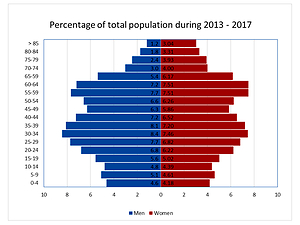Current issue
Archive
Manuscripts accepted
About the Journal
Editorial office
Editorial board
Section Editors
Abstracting and indexing
Subscription
Contact
Ethical standards and procedures
Most read articles
Instructions for authors
Article Processing Charge (APC)
Regulations of paying article processing charge (APC)
CARDIOLOGY / RESEARCH PAPER
Age-related differences in the prehospital management
of 2,500 patients with sudden cardiac arrest
1
Institute of Medical Sciences,, Collegium Medicum, The Jan Kochanowski University,
Kielce, Poland
2
The Świętokrzyskie Centre for Medical Emergency and Transport Services, Kielce,
Poland
Submission date: 2020-11-05
Final revision date: 2021-02-17
Acceptance date: 2021-03-17
Online publication date: 2021-04-04
Corresponding author
Karol Kaziród-Wolski
Collegium Medicum, The Jan Kochanowski University in Kielce, l. IX Wieków Kielc 19A, 25-317, Kielce, Poland
Collegium Medicum, The Jan Kochanowski University in Kielce, l. IX Wieków Kielc 19A, 25-317, Kielce, Poland
KEYWORDS
resuscitationsudden cardiac deathout-of-hospital cardiacarrestprehospital carereturn of spontaneous circulation
TOPICS
ABSTRACT
Introduction:
Prehospital care affects outcomes after out-of-hospital cardiac arrest (OHCA). The aim of the study is to analyze age-related differences in prehospital care and survival after OHCA and to define variables affecting the efficacy of cardiopulmonary resuscitation (CPR).
Material and methods:
We performed analysis of differences in patient characteristics influencing the efficacy of CPR and analysis of survival in four age groups: < 65, 65–74, 75–84, and ≥ 85. This retrospective registry-based study aimed to compare prehospital care in OHCA patients across age groups.
Results:
CPR was performed in 2,500 patients. Return of spontaneous circulation (ROSC) occurred in 1061 subjects. Of them, 339 had incomplete medical records, 201 survived at least 24 h, 115 up to 30 days and 78 were alive at 365 days after discharge. The occurrence of shockable rhythms and the ROSC rate decreased with age. Overall mortality increased with age. Such factors as age, gender, urban area, home location, time to arrival, and witnessed OHCA were predictors of the initial shockable rhythm. Gender, urban area, OHCA witnessed by family member, time to arrival, cardiac cause and shockable rhythm were predictors of ROSC. The risk of death increased with each age group by about 56% (HR = 1.56, p < 0.0001).
Conclusions:
Shockable initial rhythm and urban location were the strongest predictors of ROSC. Survival at 30 and 365 days after OHCA decreased in older patients. Survival among older patients with OHCA is worse than in younger subjects, which results from lower efficacy of resuscitation and more frequent death declared upon arrival.
Prehospital care affects outcomes after out-of-hospital cardiac arrest (OHCA). The aim of the study is to analyze age-related differences in prehospital care and survival after OHCA and to define variables affecting the efficacy of cardiopulmonary resuscitation (CPR).
Material and methods:
We performed analysis of differences in patient characteristics influencing the efficacy of CPR and analysis of survival in four age groups: < 65, 65–74, 75–84, and ≥ 85. This retrospective registry-based study aimed to compare prehospital care in OHCA patients across age groups.
Results:
CPR was performed in 2,500 patients. Return of spontaneous circulation (ROSC) occurred in 1061 subjects. Of them, 339 had incomplete medical records, 201 survived at least 24 h, 115 up to 30 days and 78 were alive at 365 days after discharge. The occurrence of shockable rhythms and the ROSC rate decreased with age. Overall mortality increased with age. Such factors as age, gender, urban area, home location, time to arrival, and witnessed OHCA were predictors of the initial shockable rhythm. Gender, urban area, OHCA witnessed by family member, time to arrival, cardiac cause and shockable rhythm were predictors of ROSC. The risk of death increased with each age group by about 56% (HR = 1.56, p < 0.0001).
Conclusions:
Shockable initial rhythm and urban location were the strongest predictors of ROSC. Survival at 30 and 365 days after OHCA decreased in older patients. Survival among older patients with OHCA is worse than in younger subjects, which results from lower efficacy of resuscitation and more frequent death declared upon arrival.
Share
RELATED ARTICLE
We process personal data collected when visiting the website. The function of obtaining information about users and their behavior is carried out by voluntarily entered information in forms and saving cookies in end devices. Data, including cookies, are used to provide services, improve the user experience and to analyze the traffic in accordance with the Privacy policy. Data are also collected and processed by Google Analytics tool (more).
You can change cookies settings in your browser. Restricted use of cookies in the browser configuration may affect some functionalities of the website.
You can change cookies settings in your browser. Restricted use of cookies in the browser configuration may affect some functionalities of the website.



